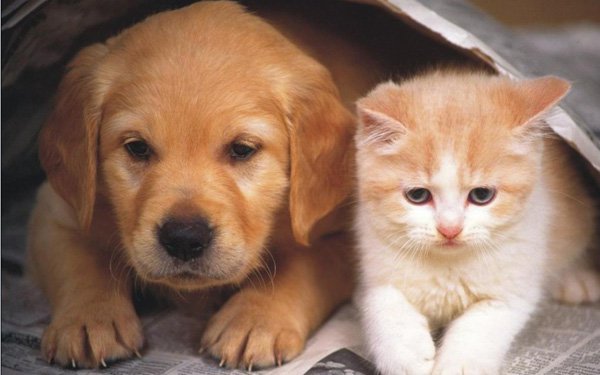

The beautiful lily is one of the most commonly used flowers in florist’s arrangements, and they are also popular as pot plants to make an attractive addition to the household as well. Unfortunately, however, if your house is also home to a cat, you should be aware that lilies are also extremely poisonous to our feline companions, and you should not keep lilies of any type within the home if at all possible.
If it comes as a surprise to you that lilies can poison cats and you are wondering about the risks involved and how to keep your cat safe, read on to find out more about lily poisoning in cats, how to identify the symptoms, and how to prevent it.
Like many plants, lilies are simply not suitable for feline consumption. The whole of the lily plant itself is toxic to cats; that includes the pollen, leaves, roots, petals and everything else, meaning that cut lilies in vases and growing lilies in pots are equally dangerous.
Once a cat ingests lilies either deliberately or inadvertently, the toxin present within the plant is absorbed by the kidneys, which ultimately if left untreated will cause fatal or permanent kidney damage and severe pain and sickness.
As far as we are currently aware, all types and varieties of lilies may potentially be poisonous to cats, and in every format that they come in, be that cut, dried, or growing in a pot. Some of the most commonly found lily types that are known to be poisonous to cats include:
Many other varieties of less commonly seen lilies are also toxic to cats, so it is safest to assume that any variety of lily may potentially be dangerous to your cat.
Cats will occasionally deliberately eat or bite the leaves or flowers of the lily, although this is relatively uncommon. Kittens are the most likely to eat or bite flowers of any type, as they explore the world around them. But the most common risk of ingestion of lilies for cats comes from the pollen of the lily. Lilies tend to drop significant amounts of pollen, which can easily be picked up on your cat’s paws or rub off onto the coat, and is then ingested when your cat washes and grooms itself.
Only a very small amount of pollen or one small leaf or petal is required to make your cat very sick relatively quickly. After ingestion, symptoms begin to manifest within a few hours, or even under half an hour in some cases.
Be on the lookout for these early symptoms, which will begin to develop in just a few hours:
As the poisoning progresses, it will begin to affect the kidneys, leading to localised pain in that area and general sickness and unhappiness. Left untreated, this will cause kidney failure and a painful death.
If you know or suspect that your cat has ingested lilies, even a small quantity, do not wait to see if symptoms develop. Call your vet as a matter of urgency, and be prepared to take them along to the surgery right away. Time is of the essence here, as your vet may wish to induce vomiting in your cat to remove any lily matter left in the stomach and help to minimise the amount that your cat digests.
If you manage to get your cat to the vet quickly enough, your veterinary surgeon may give your cat a compound to either make them vomit up any remaining lily matter within the stomach, or to absorb any that is left.
If treatment for lily consumption is started within four to six hours of it being eaten, the cat will have a good chance of ultimate recovery, so time is of the essence in order to attempt to prevent kidney damage and the kidney’s eventual shutdown.
Your cat will require hospitalisation and careful monitoring for at least 72 hours after ingestion, to watch for the signs of kidney failure and react to any problems that arise. Your cat may be placed on IV fluid therapy to keep them hydrated, as well as potentially giving medications to control nausea and vomiting. This is not the type of treatment that can be administered at home, and veterinary supervision is essential in order to address any problems that arise along the way.
There really is no safe way to keep lilies within a home that contains cats, even if you have a room that is out of cat-bounds or a shelf that your cat cannot reach. Lilies drop a significant amount of pollen, and so lily pollen can be found on the ground and furniture below high shelves, and tracked throughout the house by people and other pets.
The best way of preventing your cat from coming into contact with lilies is ensuring that you do not allow lilies to be brought into your home at all.
 All About The Pastoral Dog Group
All About The Pas
All About The Pastoral Dog Group
All About The Pas
 The Many Poodle Colour Combinations And Markings
The Many Poodle C
The Many Poodle Colour Combinations And Markings
The Many Poodle C
 Pair Bonded Dogs And What This Means
Pair Bonded Dogs
Pair Bonded Dogs And What This Means
Pair Bonded Dogs
 Feeding Tips For Dogs - The Right Way To Feed A Dog
Do you honestly know the correct way to feed a dog? Soun
Feeding Tips For Dogs - The Right Way To Feed A Dog
Do you honestly know the correct way to feed a dog? Soun
 Most Easy Steps to Train a Dog
Most Easy Steps to Train a Dog
Most of us thin
Most Easy Steps to Train a Dog
Most Easy Steps to Train a Dog
Most of us thin
Copyright © 2005-2016 Pet Information All Rights Reserved
Contact us: www162date@outlook.com